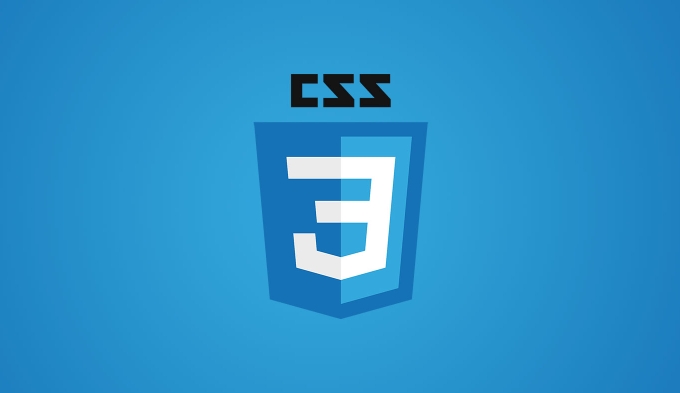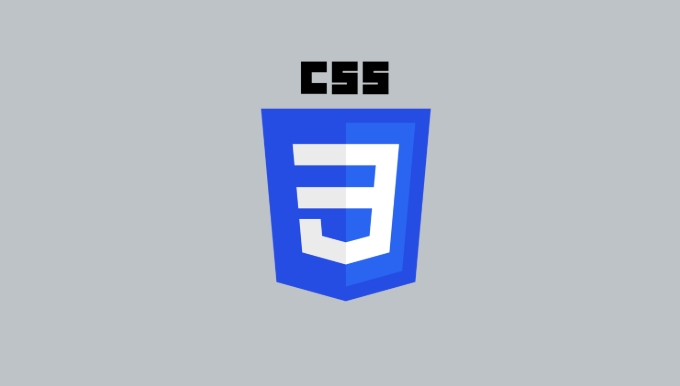When encountering problems such that the CSS style does not take effect, is overwritten or inheritance confusing, the CSS feature value and inheritance mechanism should be given priority. 1. Understand and calculate the specific weight of the selector, inline style > ID selector > Class selector, attribute selector, pseudo-class > element selector and pseudo-element. Rules with high weights will override the rules with low weights, even if the latter appears in the code; you can view the style source and weights through the "Computed" panel of the browser developer tool. 2. Avoid abuse!important, only used when overwriting third-party library styles or emergency repairs. It is also recommended to optimize the structure by increasing the selector weight, splitting the class, or adopting BEM naming specifications. 3. Pay attention to whether the attributes are inheritable. For example, color and font-size will inherit, while border and margin will not. You can confirm the source of the attribute through the Computed tag and use inherit, initial or unset to control the inheritance behavior. 4. Use the cascading order to manage style priorities, including style source, !important, rule order and other factors. Note that the CSS file loading order will affect the cascading order. You can use the developer tools to view the specific style source, or use @layer to control the cascading order to avoid style conflicts.

When encountering the problem that the CSS style does not take effect, is overwritten, or the inheritance relationship is confusing, many people's first reaction is "Is the selector written incorrectly?" In fact, it is often the CSS characteristics and inheritance at work. To solve these problems, the key is to understand their working mechanisms and learn to check and adjust.

1. Understand the priority of CSS attribute values
The "weight" of different selectors in CSS determines which style will eventually be applied to the element. This weight is specific. It is not a simple "who is behind and who takes effect", but there is a set of calculation rules:

- The inline style has the highest weight (such as
style="color: red") - ID selector (such as
#header) - Class selector, attribute selector, pseudo-class (such as
.btn,[type="text"],:hover) again - Element selectors and pseudo-elements (such as
div,::before) are weakest
For example:
/* Weight: 0,1,0 */
#main {
color: red;
}
/* Weight: 0,0,3 */
div.container .text {
color: blue;
} Although .text appears behind, the color is still red because #main has a higher weight.

Debugging suggestions:
- Open the browser developer tool, select the target element, and view what styles are applied in the "Computed" panel.
- Tools usually display the specific weight of each rule and mark the overridden style (usually crossed out state).
- If you find that a style is not effective, first check whether its selector is overwritten by a higher-weighted selector.
2. Avoid abuse!important
Some developers directly add !important when they see that the style does not take effect. Although this can solve the problem, it will cause maintenance troubles, especially when multiple people collaborate, it is easy to cause confusion.
When can it be used?
- Third-party library style overlay (such as some UI frameworks)
- Quickly fix emergency online problems (remember to follow-up optimization)
More recommended practices:
- Increase the weight of the selector, such as changing from
.btn.container .btn - Split the style into a separate class to avoid too deep nesting
- Use BEM or similar naming specifications to improve maintainability
3. Pay attention to the influence of inheritance and default styles
Not all CSS properties are automatically inherited. For example, color and font-size will inherit, while border and margin will not. If you find an element "inexplicably" with a font size or color, it is likely that it is inherited from the parent.
Common phenomena:
- Set
p { font-size: 16px }, but it actually shows that it is larger or smaller - maybe the parent container has a larger font size and is inherited - Text colors in custom components are always inconsistent with expectations - maybe inherited from global themes
Debugging suggestions:
- Check the attribute source in the "Computed" tab to confirm whether it comes from inheritance
- Use
inheritto explicitly control inheritance behavior (e.g.color: inherit) - Quickly reset properties with
initialorunsetfor testing
4. Manage style priority using cascading order
In addition to specificity, CSS also determines which rule takes effect through cascade. The order of stacking is determined by the following factors:
- Style source (user agent style, user style, author style)
- Is it used
!important - The order in which the rules appear (the latter wins under the same weight)
This means:
- When multiple CSS files are introduced, the rules of the same name in the subsequently loaded file may overwrite the previous one.
- In the style sheet introduced using
<link>, those with the order are backwards and have a higher stacking order (provided that the specificity is the same)
Debugging suggestions:
- View the file and line number of the specific style source in the developer tool
- Unify the CSS loading order to avoid logical confusion
-
@layer(supported by modern browsers) can be used appropriately to control the cascade order for key styles
Basically that's it. These questions may seem simple, but are easily overlooked in large projects. Master the basic principles of specificity and inheritance, and cooperate with browser tools, you can quickly locate and fix style conflicts.
The above is the detailed content of Debugging CSS specificity and inheritance issues. For more information, please follow other related articles on the PHP Chinese website!

Hot AI Tools

Undress AI Tool
Undress images for free

Undresser.AI Undress
AI-powered app for creating realistic nude photos

AI Clothes Remover
Online AI tool for removing clothes from photos.

Clothoff.io
AI clothes remover

Video Face Swap
Swap faces in any video effortlessly with our completely free AI face swap tool!

Hot Article

Hot Tools

Notepad++7.3.1
Easy-to-use and free code editor

SublimeText3 Chinese version
Chinese version, very easy to use

Zend Studio 13.0.1
Powerful PHP integrated development environment

Dreamweaver CS6
Visual web development tools

SublimeText3 Mac version
God-level code editing software (SublimeText3)

Hot Topics
 What is Autoprefixer and how does it work?
Jul 02, 2025 am 01:15 AM
What is Autoprefixer and how does it work?
Jul 02, 2025 am 01:15 AM
Autoprefixer is a tool that automatically adds vendor prefixes to CSS attributes based on the target browser scope. 1. It solves the problem of manually maintaining prefixes with errors; 2. Work through the PostCSS plug-in form, parse CSS, analyze attributes that need to be prefixed, and generate code according to configuration; 3. The usage steps include installing plug-ins, setting browserslist, and enabling them in the build process; 4. Notes include not manually adding prefixes, keeping configuration updates, prefixes not all attributes, and it is recommended to use them with the preprocessor.
 CSS tutorial for creating a sticky header or footer
Jul 02, 2025 am 01:04 AM
CSS tutorial for creating a sticky header or footer
Jul 02, 2025 am 01:04 AM
TocreatestickyheadersandfooterswithCSS,useposition:stickyforheaderswithtopvalueandz-index,ensuringparentcontainersdon’trestrictit.1.Forstickyheaders:setposition:sticky,top:0,z-index,andbackgroundcolor.2.Forstickyfooters,betteruseposition:fixedwithbot
 CSS tutorial for creating loading spinners and animations
Jul 07, 2025 am 12:07 AM
CSS tutorial for creating loading spinners and animations
Jul 07, 2025 am 12:07 AM
There are three ways to create a CSS loading rotator: 1. Use the basic rotator of borders to achieve simple animation through HTML and CSS; 2. Use a custom rotator of multiple points to achieve the jump effect through different delay times; 3. Add a rotator in the button and switch classes through JavaScript to display the loading status. Each approach emphasizes the importance of design details such as color, size, accessibility and performance optimization to enhance the user experience.
 How to create an intrinsically responsive grid layout?
Jul 02, 2025 am 01:19 AM
How to create an intrinsically responsive grid layout?
Jul 02, 2025 am 01:19 AM
To create an intrinsic responsive grid layout, the core method is to use CSSGrid's repeat(auto-fit,minmax()) mode; 1. Set grid-template-columns:repeat(auto-fit,minmax(200px,1fr)) to let the browser automatically adjust the number of columns and limit the minimum and maximum widths of each column; 2. Use gap to control grid spacing; 3. The container should be set to relative units such as width:100%, and use box-sizing:border-box to avoid width calculation errors and center them with margin:auto; 4. Optionally set the row height and content alignment to improve visual consistency, such as row
 CSS tutorial focusing on mobile-first design
Jul 02, 2025 am 12:52 AM
CSS tutorial focusing on mobile-first design
Jul 02, 2025 am 12:52 AM
Mobile-firstCSSdesignrequiressettingtheviewportmetatag,usingrelativeunits,stylingfromsmallscreensup,optimizingtypographyandtouchtargets.First,addtocontrolscaling.Second,use%,em,orreminsteadofpixelsforflexiblelayouts.Third,writebasestylesformobile,the
 How to center an entire grid within the viewport?
Jul 02, 2025 am 12:53 AM
How to center an entire grid within the viewport?
Jul 02, 2025 am 12:53 AM
To make the entire grid layout centered in the viewport, it can be achieved by the following methods: 1. Use margin:0auto to achieve horizontal centering, and the container needs to be set to set the fixed width, which is suitable for fixed layout; 2. Use Flexbox to set the justify-content and align-items properties in the outer container, and combine min-height:100vh to achieve vertical and horizontal centering, which is suitable for full-screen display scenarios; 3. Use CSSGrid's place-items property to quickly center on the parent container, which is simple and has good support from modern browsers, and at the same time, it is necessary to ensure that the parent container has sufficient height. Each method has applicable scenarios and restrictions, just choose the appropriate solution according to actual needs.
 What is feature detection in CSS using @supports?
Jul 02, 2025 am 01:14 AM
What is feature detection in CSS using @supports?
Jul 02, 2025 am 01:14 AM
FeaturedetectioninCSSusing@supportschecksifabrowsersupportsaspecificfeaturebeforeapplyingrelatedstyles.1.ItusesconditionalCSSblocksbasedonproperty-valuepairs,suchas@supports(display:grid).2.Thismethodensuresfuturecompatibilityandavoidsrelianceonunrel
 Addressing CSS Browser Compatibility issues and prefixes
Jul 07, 2025 am 01:44 AM
Addressing CSS Browser Compatibility issues and prefixes
Jul 07, 2025 am 01:44 AM
To deal with CSS browser compatibility and prefix issues, you need to understand the differences in browser support and use vendor prefixes reasonably. 1. Understand common problems such as Flexbox and Grid support, position:sticky invalid, and animation performance is different; 2. Check CanIuse confirmation feature support status; 3. Correctly use -webkit-, -moz-, -ms-, -o- and other manufacturer prefixes; 4. It is recommended to use Autoprefixer to automatically add prefixes; 5. Install PostCSS and configure browserslist to specify the target browser; 6. Automatically handle compatibility during construction; 7. Modernizr detection features can be used for old projects; 8. No need to pursue consistency of all browsers,






